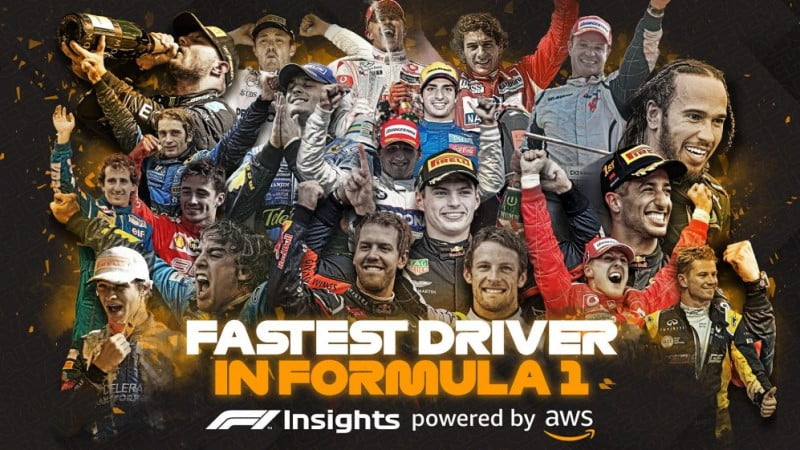F1 Drivers Comparison: the top-20 result of Formula 1 and AWS’ ‘fastest driver rankings’ brought back a debate that may never be settled in history – who is the ‘fastest driver in Formula 1’ through the generations?
Over the years, humans have attempted to answer this question. But of course, we all have our biases. This is probably why Formula 1 and AWS used machines to come up with an answer. Maybe that’s why the result of the F1 drivers comparison is unpopular – because it doesn’t address any of our biases. Apart from human biases, I am listing four criteria that impact F1 driver comparison across generations…for humans:
- Cross-generational difficulties – the cars, tyres, teams, circuits and possibly every other parameter that directly correlates with speed is different. Even the way in which data is collected and processed is vastly different over the eras. This is true for the past generation and will be true for the future, too. In fact, in 2070, 50 years hence, the list might be different and maybe the methods, too? The drivers in that generation will look back to the current with as much awe as we do to our past
- Recency bias – As Wikipedia explains it, recency bias is a cognitive bias that favours recent events over historic ones. In Formula 1, ‘recency bias’ is at work when you remember Sebastian Vettel only for his spins and for none of his dominating drives between 2010-13. One would have watched drivers race through the generations with different levels of understanding, intent and even attention. And of course, our biases can change with time
- A good machine – Formula 1 is a man-machine sport, after all. So much so that when a good driver out-drives a bad car, everyone takes note. George Russell in the Williams is the best recent example and it’s recency bias (or memory failure!) at work if one doesn’t remember Fernando Alonso in his Minardi. Truth be told, it’s usually been tougher for a driver to perform IF not racing in the best car that season or era. So what if a good driver almost never makes it to a good car? If one parses through history, several names will come up
- Social media – I’ve always wondered if Michael Schumacher or Ayrton Senna would have been bigger personalities had social media existed in their days of prime. In my view, the positioning and posturing of one’s favourite or least-favourite drivers on various social media platforms is a factor that impacts a human’s view on the ‘fastest driver’ debate. What if Juan Manuel Fangio was a bigger rockstar than Lewis Hamilton who championed social issues whilst winning his 5 Formula 1 world titles? I’m sure many readers would scoff at my adding of ‘social media’ as one of the factors but could social media have changed our perception of the drivers of the previous eras, too?
What The Machines Got Right
It’s fairly easy to agree that the machines got the top-3 result of the F1 drivers comparison right – Senna, Schumacher and Hamilton – covering at least three generations of current fans.
What’s Next?
Formula 1 and AWS released only the top-20 rankings. After the controversy around these, will they still be inclined to release another 20? A lot of famous names are still missing from the current rankings. By the way, this mathematical model is brilliant when it comes to comparing Formula 1 drivers in the same era.
